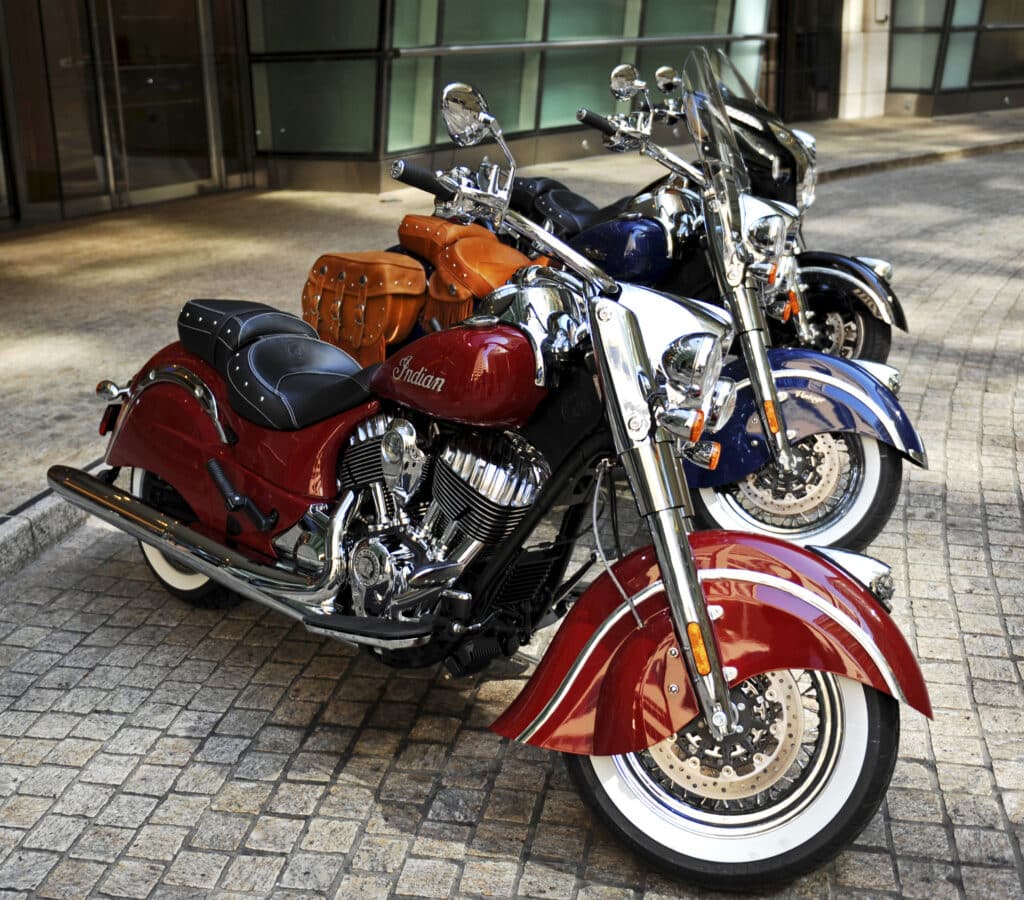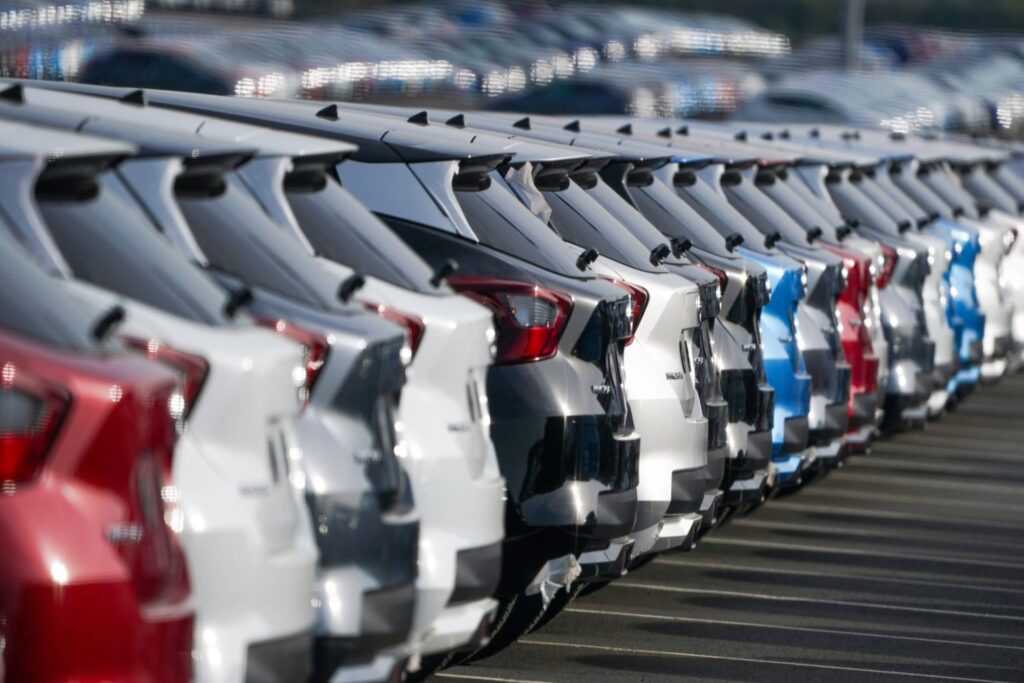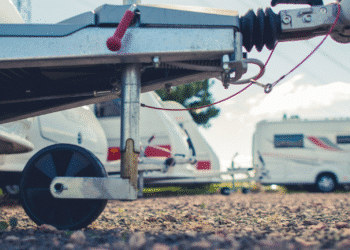Slowed sales, tariffs prompt Polaris rating downgrade
Fitch lowered its U.S. auto sales assumption to 15.2M
Tariffs and hampered consumer demand are impacting powersports and auto companies’ ability to meet their long-term financial commitments.
Imported parts levies combined with slowing sales, declining revenues and a challenging macroeconomic environment led Fitch Ratings to downgrade Polaris’ rating this month as powersports companies face added pressure compared with the automotive market.
In the past year, consumer demand for powersports products has been hampered by inflation, high interest rates and large price tags, Steve Brown, senior director in the Corporate Finance group at Fitch, told Auto Finance News.
“Compared with autos, the powersports industry is very discretionary,” he said. “If someone needs to buy a car, they’ll buy a car. There aren’t many cases where somebody absolutely needs to buy a motorcycle, boat or off-road vehicle.”

Fitch on July 9 downgraded Polaris’ long-term issuer default rating to BBB- from a rating of BBB, indicating that the rating agency expects the powersports manufacturer to fall short of conditions to meet the BBB rating through 2026, according to a Fitch release.
“The downgrade, specific to Polaris, reflects a decline in credit quality.” — Steve Brown, Fitch Ratings
The default rating acts as the anchor off which Fitch bases a company’s debt ratings, Brown said.
“The downgrade, specific to Polaris, reflects a decline in credit quality that we have seen over the past year and expect to see going forward,” he said.
Considering downgrades
A downgrade can impact investor sentiment and a company’s costs associated with raising capital, as lower ratings typically prompt higher rates requested from investors, Brown said. Conditions or factors that can prompt a negative rating action are specific to each company.
For Polaris, Fitch said, those conditions include:
- Loss of market share;
- Lower margins; and
- Changes in capital allocation policy that reduce the company’s funding flexibility.
Polaris’ rating outlook is also negative, indicating that there is potential for further credit metric challenges. According to the ratings agency, some key considerations in the downgrade were:
- Polaris reduced wholesale shipments by 21% in 2024 and increased promotions as dealers faced an abundance of supply amid slowed demand;
- The manufacturer’s exposure to tariffs outpaces its competitors due to importing components from China for U.S. factories. Fitch estimates tariffs will cost Polaris between $100 million and $150 million in 2025; and
- Polaris is expected to primarily put available cash toward reducing debt. Liquidity is expected to remain stable in the short term. Polaris had $292 million in cash and cash equivalents as of March 31, and the principal value of its debt was $2.1 billion.
Fitch has been keeping an eye on Polaris’ leverage, or the measurement of earnings to debt used to finance operations, Brown said. In June, Polaris renewed its $400 million credit facility through June 2026 and raised the limit restriction for its debt relative to earnings, according to Fitch.
While ratings factor cyclical industry changes, weaker metrics for an extended period can lead to a downgrade, Brown said, noting that a change in market conditions or Polaris’ operational health could positively impact the overall rating down the road.
“We would expect to see the company do some debt reduction,” he said. “We’d want to see the company’s margins show some improvement and demand conditions get durably better.”
A Polaris spokesperson declined to comment ahead of the company’s second-quarter earnings set to release July 29. However, during the manufacturer’s April 29 Q1 earnings call, Chief Executive Mike Speetzen said that Polaris was implementing a “four-pronged mitigation strategy” for tariffs that included:
- Supply chain and manufacturing adjustments;
- Cost control initiatives;
- Market and pricing reprioritization; and
- Government policy advocacy.
The big picture
Polaris’ downgrade comes amid weak consumer sentiment in the powersports industry amid tariff-related uncertainty combined with slower sales due in part to seasonality as well as the voluntary nature of the products, Brown said.
“Discretionary vehicles in an environment where consumer confidence is low and interest rates are high … it’s led to a steep fall off in demand,” he said, noting oversupply has also been a challenge. “Polaris sells many of its vehicles through multiline dealerships. Some dealers were getting overstocked on a lot of competitor vehicles.”
Cutting shipments has been a common way powersports manufacturers have tried to right-size inventory on dealer lots this year. Winnebago Industries’ towable, motorhome and marine inventories were down year over year in the third quarter of fiscal 2025.
Read more on powersports inventory declines
Tariffs are layered on top of supply and sales challenges. “Powersports [companies] have been hit harder because they were coming into the tariff situation from a weaker position,” Brown said.
“Powersports [companies] have been hit harder because they were coming into the tariff situation from a weaker position.” — Steve Brown, Fitch Ratings
By comparison, Harley-Davidson‘s rating is stable at BBB+ and marine manufacturer Brunswick Corp.’s rating is BBB with a negative outlook, according to Fitch, which notes that Polaris is more diversified than HOG or Brunswick.
Harley-Davidson benefits from having little debt at the parent company level and dividends from its finance arm Harley-Davidson Financial Services, Brown said, noting that recent Harley dealership closures signify the company’s effort to “right-size its dealership network” and improve profitability.
Fitch downgrades Nissan, eyes auto performance
Meanwhile, auto is also feeling the effects of tariffs.
Fitch expects auto sales to decline this year as tariffs translate into higher prices on dealer lots, Brown said. The ratings agency updated its 2025 outlook for the global automotive sector to “deteriorating” from “neutral” after revising its U.S. light vehicle sales assumption to 15.2 million units from 16.3 million units earlier this year, according to the July 7 release.
“The price increases that we’ve seen haven’t been as significant as we had anticipated, but there’s still more time to play out in the back half of the year,” he said.
Fitch in April downgraded Stellantis N.V.’s company rating to BBB from BBB+ with a stable outlook and Nissan Motor’s rating to BB from BB+.

Nissan’s outlook is negative due to tariffs combined with leadership changes, cost-cutting efforts and failed merger discussions, according to a July 7 Fitch release. The latest action for Nissan follows a February downgrade to BB+ from BBB-, moving Nissan into non-investment grade status.
Read more on how tariffs impact auto asset-backed securitization deals
Ford Motor and General Motors, on the other hand, are largely managing well despite the tariffs, Brown said, noting the carve-out for United States-Mexico-Canada Agreement compliant parts and components is a benefit.
“Some of these companies that were already having challenges coming into the year, the tariffs just pile on to that,” he said. “For issuers that already had challenges to begin with, the tariffs are more likely to result in a negative rating action than others that were coming into the year from a relatively stronger positioning.”
Powersports Finance Summit, a premier event for companies involved in recreational vehicle financing, returns Sept. 23-24 at the Sonesta Columbus. To learn more about the 2025 event and register, visit www.PowersportsFinance.com.










